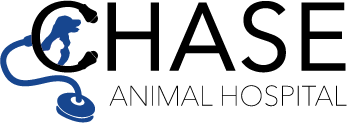The nutritional requirements of aging pets have been the subject of much discussion in recent years, particularly with the introduction of therapeutic specialty diets. Even though there is little experimental information on the nutritional requirements of senior dogs and cats, commercial diets are nevertheless currently available on the market designed specifically for the geriatric pet. These diets differ from adult maintenance diets in that they contain altered protein and fat levels, fiber content, and vitamin/mineral levels. Whether or not these changes are necessary in all older pets remains to be seen.
Aging results in numerous changes in the geriatric dog and cat that have a direct effect on their nutritional requirements. These changes occur in all the organ systems, causing a decline in body functions and a decreased ability to maintain optimal health . As pets get older, long-term exposure to oxidants, both within the body and outside the body, results in the production of harmful molecules called “oxygen-free radicals”. These radicals cause damage to cells in the body. Aging is also associated with a decline in efficiency of the immune system and, since nutritional deficiencies and excesses can modify the immune response in animals, the nutritional make-up of the senior diet must take these factors into account.
As pets get older, there is a decrease in total energy needs because of reduced physical activity and a decline in their ability to metabolize what they eat. For this reason, it is usually recommended that older animals be fed fewer calories per unit of body weight than a younger animal in order to maintain a constant body weight. However, the energy intake of a pet should be based on the individual needs of the pet rather than reducing the caloric intake in all geriatric pets regardless of health status or body mass.
Most older pets, regardless of health status, will benefit from some nutritional guidelines. For example, because food intake is often reduced in the older pet, the percentage of protein may need to be increased modestly in order to maintain an adequate protein intake per unit body mass. There is presently no evidence to indicate that protein restriction in the normal pet will prevent development of kidney disease. Similarly, in those pets that have a reduced food intake, moderate increases (e.g. 25-50%) in the concentrations of vitamins and minerals in the diet may also be beneficial. Increased dietary fiber in the geriatric diet can be helpful but may not be indicated in all senior pets. Current studies indicate that the digestive system of older dogs and cats is very little affected by age and older pets are no less efficient in extracting nutrients from food than younger animals.
Aging brings with it numerous changes which adversely affect normal body functions. However, it is important to realize that these changes do not necessarily affect all pets at the same time. There is currently no evidence to suggest that all geriatric pets would benefit from a specially-formulated therapeutic diet designed specifically for older animals. Above all, it is important for the practitioner to distinguish between the normal, healthy geriatric pet and one that exhibits clinical signs related to diseases due to the aging process before making any recommendations regarding dietary changes.

